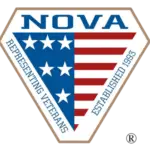Overview to VA Claims

Service Connection Key Takeaways…
The VA marketing department makes it sound like applying for VA benefits is like a walk in the park. But if you’re a veteran suspecting or already having a service-related disability, you’ll soon find out that the VA process can be more like walking in mud.
So to summarize and to make things smoother – here are the key takeaways.
Evidence is KING: Strong, evidence-backed applications significantly increase success rates.
Your Role and the VA’s: The VA does offer assistance, but often, it’s the veterans who have to lead the charge for their rights.
Prioritize the Basics: The first step? Secure solid evidence for your claim. Only then, consider wider outreach or more aggressive advocacy.
We’re Your VA Insider Resource: CaseSix and this guide are here to break down and simplify the VA claims process, ensuring you have some permanent information you need.
Staying in the Loop: VA regulations, including 38 CFR and M-21, change over time. We keep up with these changes to stay ahead.
We’re on your side, offering advice, key insights and coaching. Let’s work together and navigate the VA maze effectively.
Pro Tips:
– Combine both lay and medical evidence for a robust claim.
– File an Intent to File (VA Form 21-0966) to reserve the effective date and use the next 12 months to gather evidence.
– Secure medical evidence for your present disability and share your history with your doctor. If possible, request a written opinion linking your disability to its service-related cause.
Got Benefit Questions?
If the VA denies your claim, contact us immediately, and we can offer a free review and consultation. We’ll make sure the VA follows all protocols and that your evidence is correct and comprehensive.
In this overview, we simplify and break down the essentials for a veteran to qualify for service-connected disability compensation:
- A current disability.
- An in-service disease, injury, or event.
- A link between the current disability and the in-service occurrence.
Let’s Go a Little Deeper:
1. Current Disability Evidence:
- – Veterans need to provide proof of an existing disability.
- – If an in-service injury has fully healed, with no symptoms – it doesn’t count.
- – Typically, a medical diagnosis proves the current disability. We suggest going to your doctor and getting a written diagnosis for your disability.
2. Evidence of In-Service Occurrence:
- – Both lay and medical evidence can validate an in-service disease, injury, or event.
- – Depending on the claim, such as PTSD or a physical injury, the nature of the evidence differs.
- – Primary evidence might be in the service record. But sometimes, records might be missing or lack vital information, especially for sensitive issues like Military Sexual Trauma (MST).
- – In such scenarios, detailed statements or “buddy statements” can be invaluable. For MST-related claims and combat veteran scenarios, the VA uses ‘relax standards’.
3. Connecting the Dots (Nexus Requirement):
- – There must be proof linking the current disability to the in-service event.
- – Ways to establish this connection:
- – Direct: Clear evidence linking the disability to an in-service occurrence.
- – Secondary: Another service-connected disability caused the present disability.
- – Presumptive: The VA assumes the current disability resulted from service.
- Aggravation: A pre-service condition worsened due to service.
4. VA’s Role & Duty to Assist:
- Veterans don’t bear the entire burden of evidence. VA law mandates them to guide and aid veterans by:
- – Informing them of the necessary information.
- – Assisting in gathering evidence.
- – Collecting military and private treatment records.
- – Arranging medical exams and procuring medical opinions when needed.
- To initiate this assistance, veterans should provide a basis of evidence, including a statement about the service-related injury.
5. Understanding Evidence:
- Lay Evidence: Information does not need to be specialized. This could be:
- – Descriptions of in-service injuries, symptoms, or significant events.
- – Testimonies from peers, family, or other individuals.

Have CaseSix Review Your VA Claim.
Uncover the Benefits You Earned Begins Here.
Free & Confidential.
Get an accurate assessment of your total disability rating
Let's Get Started.
Menu





